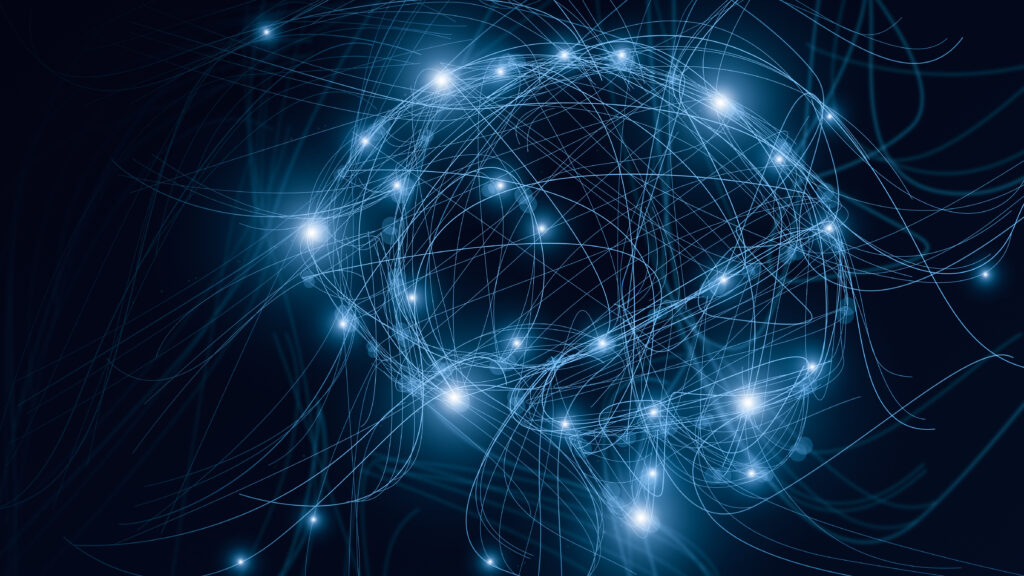Researchers say they’ve been able to measure recovery from treatment-resistant depression through brain scans — a crucial step toward quantifying the impact of therapies on a condition whose progress is notoriously difficult to measure objectively. And that’s thanks to generative AI, they say.
In a small study published Wednesday — just 10 people with severe, treatment-resistant depression receiving deep brain stimulation therapy — researchers used the electrodes to record brain activity and later fed the scans into a homegrown artificial intelligence system that analyzed them for patterns. They found that it was possible to track patients’ recovery through changes in brain cells’ electrical activity.
advertisement
Finding so-called biomarkers, or objective measurements reflecting depression, could help diagnose depression, track its progression, predict a relapse, and better tailor therapies to individual patients. But finding those metrics has been difficult, partly because depression’s biological impact isn’t well understood.
Researchers desperate to get a better handle on severe depression have looked to biochemicals and neuroimaging; the field has even attracted startups building out “digital biomarkers,” like patients’ typing patterns on their phones, like now-shuttered tech darling Mindstrong.
“Psychiatry has long suffered from the idea that we don’t have biomarkers to know how to treat people,” said Helen Mayberg, a senior author on the study published in Nature, and founding director of Icahn Mount Sinai’s Nash Family Center for Advanced Circuit Therapeutics.
advertisement
The study could be a step toward better quantifying depression recovery, even for other types of therapies, she said.
Mayberg has been studying deep brain stimulation, which uses implanted electrodes to deliver electrical pulses to the brain, for decades. But generative AI — the same technology underlying systems like ChatGPT, trained to identify data patterns — gave Mayberg and her colleagues at Georgia Institute of Technology and Emory University School of Medicine a major breakthrough, they told STAT.
The AI system scanned recordings of patients’ brain activity gathered by the already implanted electrodes, which allowed researchers to identify certain patterns; they also developed and used tools known as explainable artificial intelligence that allowed researchers to investigate which factors, like electrical impulses in certain parts of the brain, were most closely linked to recovery.
“We’d say, ‘Here’s a brain signal … what is it that has to change about a sick brain in order for it to start looking like a well brain?’” said Christopher Rozell, an electrical and computer engineering professor at Georgia Tech and a co-senior author on the study.
What they found is it’s not just one factor, or frequency of impulses or location within the brain. “It’s a coordination of a collection of features [that] appear to be changing together,” Rozell said. For instance, “a sick brain going to well looks like, in the left hemisphere, alpha and beta [wave] increases, and in the right, alpha and gamma increases.”
“Like an orchestra the brain is communicating through the choreography of many neurons,” Mayberg said.
Researchers analyzed the brain scans after patients completed treatment, and found that the AI biomarker could help predict a relapse.
One patient who was in remission for months experienced a relapse, but the AI picked up an indicator of relapse five weeks before, Rozell said. It was also able to distinguish between scan changes that indicated just everyday fluctuations in mood and potential relapses, and noted changes in patients’ facial expressions as they recovered.
“With the subjective symptom surveys that are the gold standard when a patient comes in and complains about distress, having negative emotions, [it’s] difficult to tell — is that patient in a relapse and might need stimulation adjustment? Is that person having a bad day, just like we all have?’” Rozell added.
By quantifying something psychiatrists have long known anecdotally, he said, “we can make objective measures that give good information to support clinical decision-making.”
The authors acknowledged several limitations, including the small sample size and that researchers didn’t model moment-to-moment changes in brain activity. And according to a manuscript shared with STAT, some authors also serve as consultants to medical device and pharmaceutical companies including Abbott Laboratories, which sells deep brain stimulation technology, and Janssen Pharmaceuticals.

